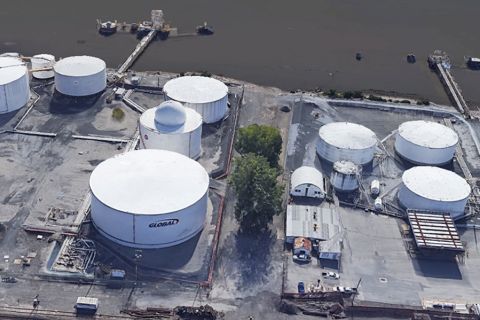Learn more about Hart Energy Conferences
Get our latest conference schedules, updates and insights straight to your inbox.
U.S. natural gas prices gained over 2% on Jan. 3 after output fell during the New Year’s weekend as cold weather froze some production wells in Texas, New Mexico and Colorado, reminding the market of what can happen when temperatures drop.
Last February, a brutal winter storm named Uri killed more than 100 people and left around 4.5 million Texas homes and businesses without power and heat—some for days—after gas pipes and power plants froze.
The cold over the New Year’s weekend, however, was nowhere near as extreme as last February’s freeze. Well freeze-offs occur whenever temperatures drop enough to freeze water and other liquids in a well or pipe and halt production.
“Gas prices have been falling recently with the rise in production but gained on Monday as the freeze-offs disconcerted the market,” said John Abeln, senior analyst of natural gas research at data provider Refinitiv.
Gas output in the U.S. Lower 48 states fell to an average of 94.8 Bcf/d so far in January from a record 97.6 Bcf/d in December, according to Refinitiv data.
Much of that production decline was in Texas and occurred on Jan. 2.
Low temperatures in the West Texas town of Midland plunged to an overnight low of 16 F (minus 9 C) on Sunday, but were expected to rise to a near-normal overnight low of 32 F on Jan. 3, according to meteorologists at AccuWeather.
Midland is located in the Permian Basin, which is the biggest oil-producing and second biggest gas-producing shale formation in the U.S.
Since last February’s freeze, Texas has approved numerous laws and regulations that state officials say should improve power and gas market reliability, and avoid price spikes and outages like those seen last winter.
Recommended Reading
Mexico Pacific Appoints New CEO Bairstow
2024-04-15 - Sarah Bairstow joined Mexico Pacific Ltd. in 2019 and is assuming the CEO role following Ivan Van der Walt’s resignation.
Global Partners Declares Cash Distribution for Series B Preferred Units
2024-04-15 - Global Partners LP announced a quarterly cash dividend on its 9.5% fixed-rate Series B preferred units
W&T Offshore Adds John D. Buchanan to Board
2024-04-12 - W&T Offshore’s appointment of John D. Buchanan brings the number of company directors to six.
73-year Wildcatter Herbert Hunt, 95, Passes Away
2024-04-12 - Industry leader Herbert Hunt was instrumental in dual-lateral development, opening the North Sea to oil and gas development and discovering Libya’s Sarir Field.
Riley Permian Announces Quarterly Dividend
2024-04-11 - Riley Exploration Permian’s dividend is payable May 9 to stockholders of record by April 25.





